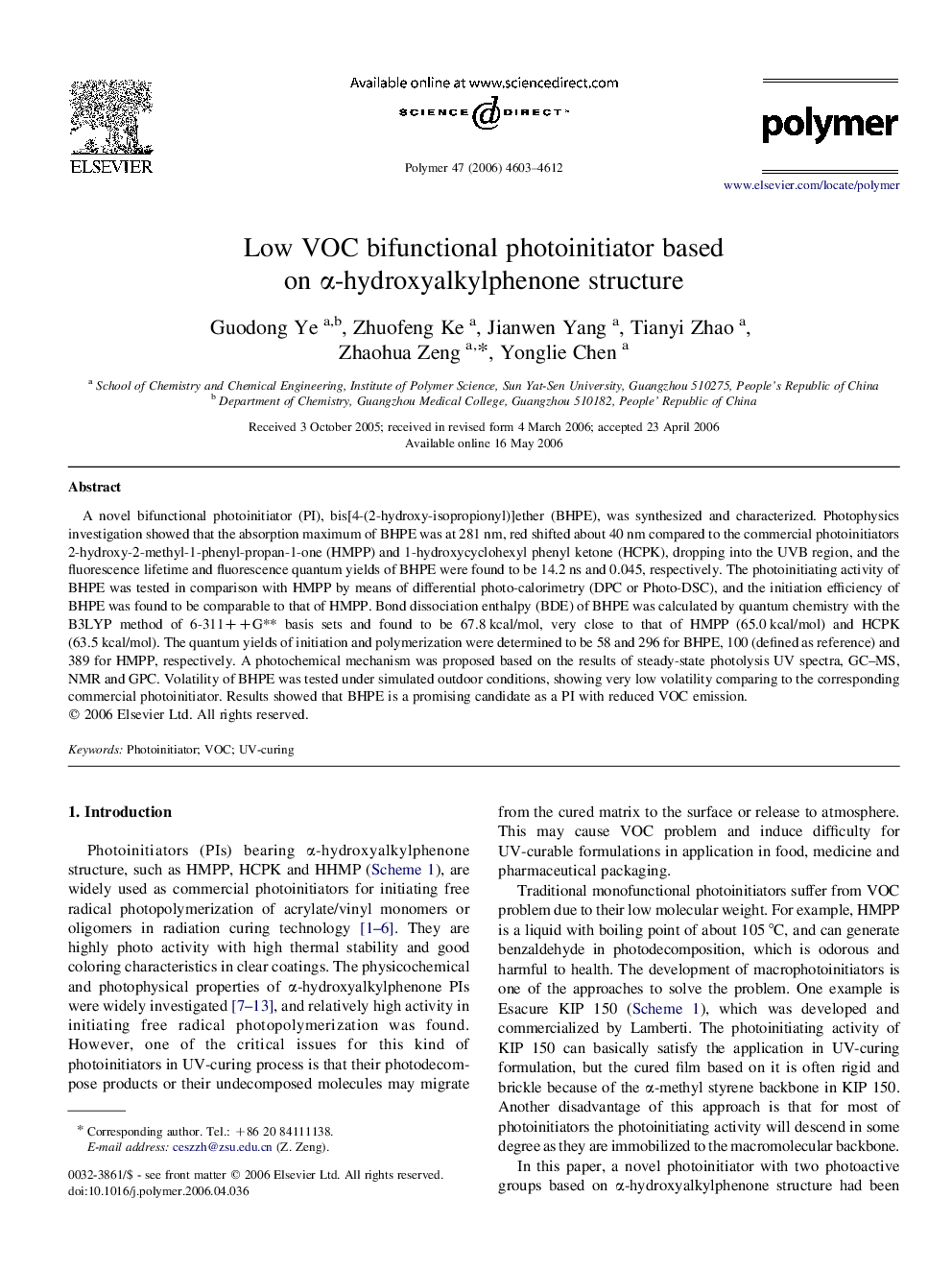| Article ID | Journal | Published Year | Pages | File Type |
|---|---|---|---|---|
| 5189501 | Polymer | 2006 | 10 Pages |
A novel bifunctional photoinitiator (PI), bis[4-(2-hydroxy-isopropionyl)]ether (BHPE), was synthesized and characterized. Photophysics investigation showed that the absorption maximum of BHPE was at 281Â nm, red shifted about 40Â nm compared to the commercial photoinitiators 2-hydroxy-2-methyl-1-phenyl-propan-1-one (HMPP) and 1-hydroxycyclohexyl phenyl ketone (HCPK), dropping into the UVB region, and the fluorescence lifetime and fluorescence quantum yields of BHPE were found to be 14.2Â ns and 0.045, respectively. The photoinitiating activity of BHPE was tested in comparison with HMPP by means of differential photo-calorimetry (DPC or Photo-DSC), and the initiation efficiency of BHPE was found to be comparable to that of HMPP. Bond dissociation enthalpy (BDE) of BHPE was calculated by quantum chemistry with the B3LYP method of 6-311++G** basis sets and found to be 67.8Â kcal/mol, very close to that of HMPP (65.0Â kcal/mol) and HCPK (63.5Â kcal/mol). The quantum yields of initiation and polymerization were determined to be 58 and 296 for BHPE, 100 (defined as reference) and 389 for HMPP, respectively. A photochemical mechanism was proposed based on the results of steady-state photolysis UV spectra, GC-MS, NMR and GPC. Volatility of BHPE was tested under simulated outdoor conditions, showing very low volatility comparing to the corresponding commercial photoinitiator. Results showed that BHPE is a promising candidate as a PI with reduced VOC emission.
